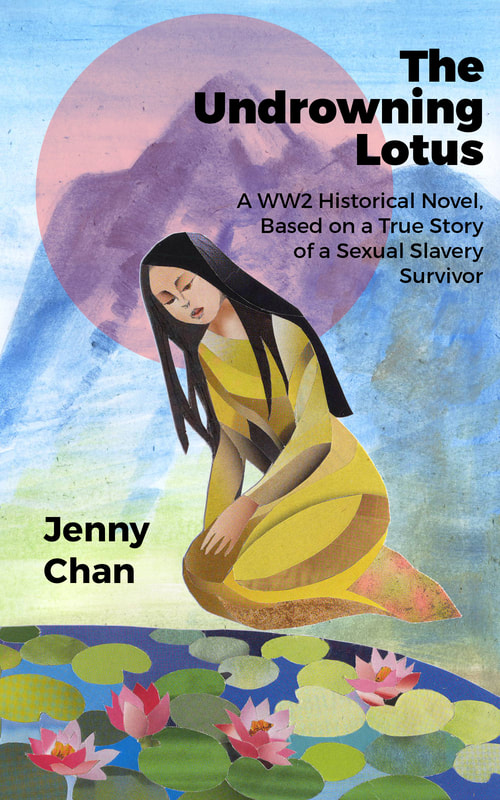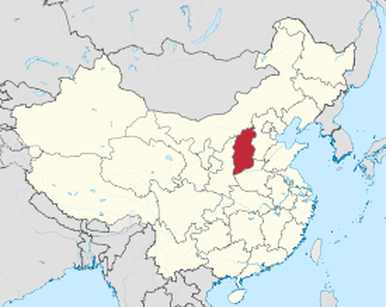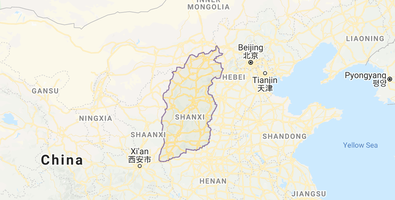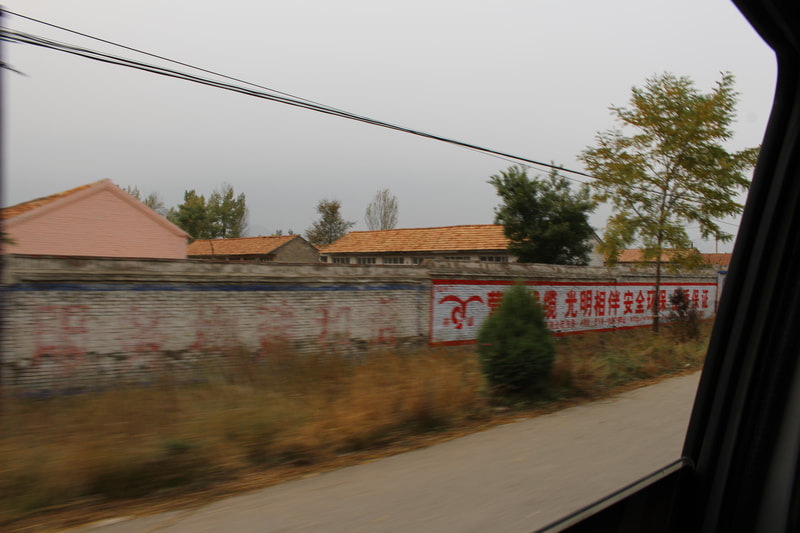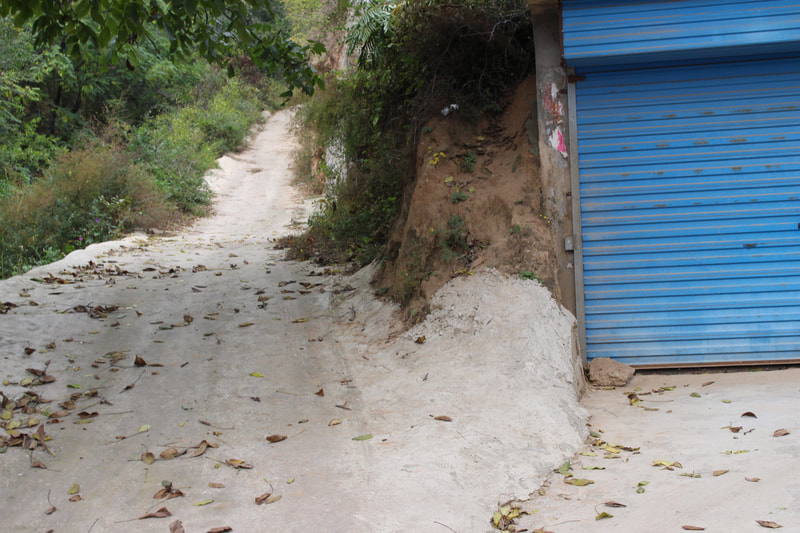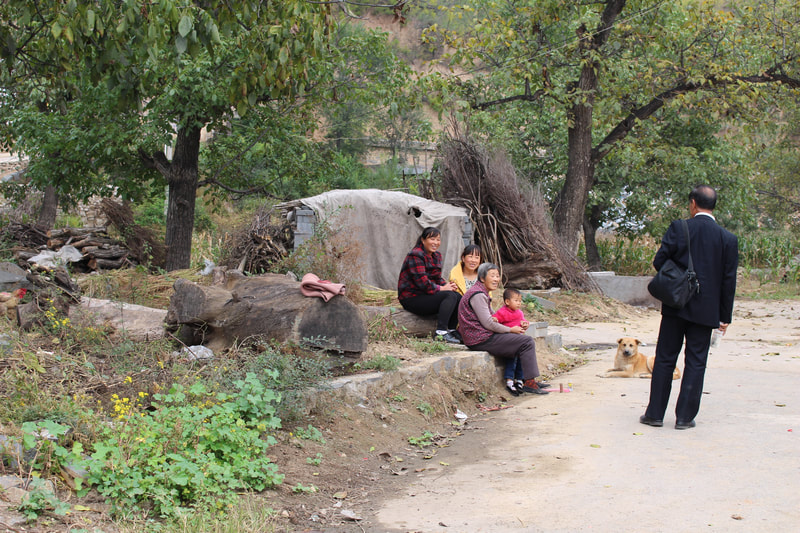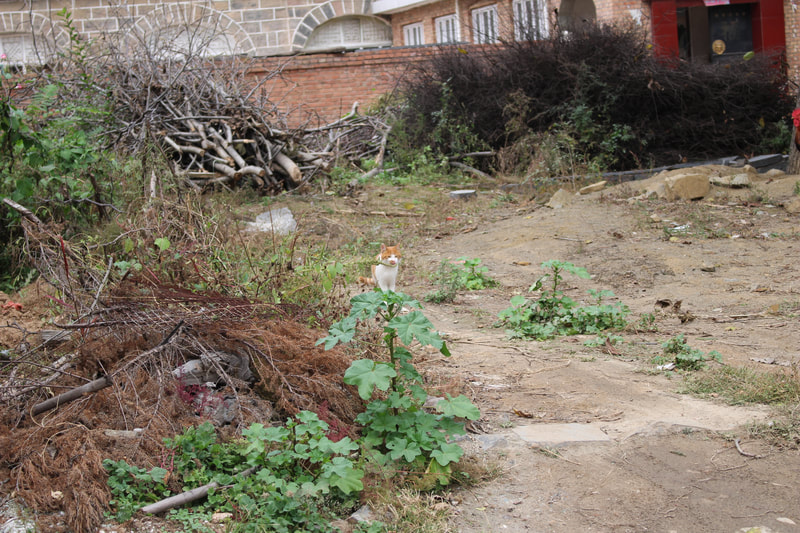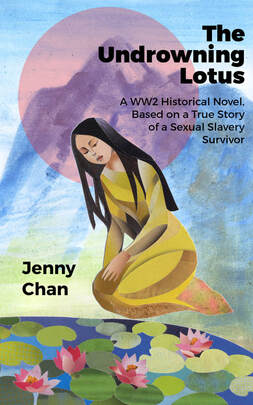The Undrowning Lotus: A WW2 Historical Novel, Based on a True Story of a Sexual Slavery SurvivorBased on a true story, Undrowning Lotus centers on Chunhua who grew up during the opium crisis in Shanxi, located in Northern China. After being sold as a child bride, her feet were bounded by her in-laws, a popular practice in China at the time. She worked on the farm day and night while trying to find meaning in her life.
As communism rose in China, she became a revolutionary. This allowed her to contribute to her country at a time of civil war in China. During the invasion of China by the Imperial Japanese Army, she was captured and put into sexual slavery known as comfort women station. According to Iris Chang, the author of the Rape of Nanking, these women were called "public toilets" by Japanese soldiers. This is a story of survival through the comfort woman station in Northern China, where our heroine escaped and was recaptured a couple of times before the war ended. This book features interviews from 2014 with Chinese comfort women from Shanxi before they passed away as well as rare photos of a comfort station from Northern China. If you want to purchase a license for your classroom, click here. |
- Home
- Stories
-
Internship
- Summer 2024 Internship
- Summer 2023 Internship
- Fall 2022 Internship
- Summer 2022 Internship
- Summer 2021 Internship
- Fall 2020- Spring 2021 Internship
- Summer 2020 Internship
- Fall 2019 Internship
- Summer 2019 Internship >
- School Year 2018-2019 Internship
- Summer 2018 Internship >
- Fall 2017 Internship
- Summer 2017 Internship >
- Books
- Archives
-
Resource Page
-
Supplementary Research Guides
>
- Unit 731 - Guide >
-
Philippines' Resistance - Guide
>
- Philippines World War II Timeline
- The Japanese Invasion & Conquest of the Philippines
- Bataan Death March
- Formation of Underground Philippines Resistance
- Supplies of the Guerrilla Fighters
- The Hukbalahap
- Hunter's ROTC
- Marking's Guerrillas
- United States Army Forces in the Philippines of Northern Luzon (USAFIP-NL)
- The Aetas
- Chinese and Filipino-Chinese Nationalist Guerrilla Units
- The Female Faces of the Philippine Guerrillas
- Rising Sun Flag - Guide >
- Pinay Guerrilleras - Guide >
- Fall of Singapore - Guide >
- Three Years and Eight Months - Guide >
- Siamese Sovereignty - Guide >
- The Khabarovsk War Crimes Trial - Guide >
- Unit 731 Cover-up : The Operation Paperclip of the East - Guide >
- Marutas of Unit 731 - Guide >
- Prince Konoe Memoir - Guide >
- Competing Empires in Burma - Guide >
- Battle of Shanghai - Guide >
- Ishi Shiro - Guide >
- Taiwan The Israel of the East - Guide >
- Seeking Justice for Biological Warfare Victims of Unit 731 - Guide >
- Rice and Revolution - Guide >
- Clash of Empires - Guide >
-
Hunger for Power and Self-SufficiencyI - Guide
>
- The Influence of War Rations on Post-War Culinary Transformations
- How World War II Complicated Food Scarcity and Invention
- American Military Innovations
- Government-Sponsored Food Inventions in Europe during World War II
- Feeding the Army: The Adaptation of Japanese Military Cuisine and Its Impact on the Philippines
- Mixed Dishes: Culinary Innovations Driven by Necessity and Food Scarcity
-
Denial A Quick Look of History of Comfort Women and Present Days’ Complication - Guide
>
- The Comfort Women System and the Fight for Recognition
- The Role of Activism and International Pressure
- The Controversy over Japanese History Textbooks
- The Sonyŏsang Statue and the Symbolism of Public Memorials
- Activism and Support from Japanese Citizens
- The Future of Comfort Women Memorials and Education
- Echoes of Empire: The Power of Japanese Propaganda - Guide >
- Lesson Plans >
-
Supplementary Research Guides
>
Selected reviews-
"Jenny Chan has created a poignant account of the tragic violence enacted on Chinese comfort women by Japanese soldiers during World War II. Based on interviews with survivors, the story of Chinese women brutalized in wartime is told from the perspective of a young Chinese girl who brings emotional resonance and strength to a too often overlooked historical atrocity."
|
"Chan's ability to gather and weave the oral histories of women who suffered under the Japanese occupation into such a captivating tale of woe, culture, and hope is exceptional. Her storytelling does justice to our female elders, retelling their experiences in a way that challenges the reader's imagination and inspires an affinity for our lost histories in the Pacific Theater." -- Stacey Anne Salinas, Senior Historian of the Bulosan Center of Filipino Studies, UC Davis |
Where does the story take place?
Comfort Station in Shanxi
Interview with Zhuang Xian Tu in 2014
Zhuang Xian Tu was born in 1926. She was married in 1941 when she was 16 to a 13-year-old boy. She was still celebrating Chinese New Year and her recent marriage in the morning of the second day of Chinese New Year in 1942 when a few Japanese soldiers came to her house to capture her. They looted her neighbors’ homes, and it was her household’s turn.
She was struggling with the soldiers not to be dragged out of the house. In the midst of struggle, one of the soldiers used the back of his rifle to hit her legs and head. Her young husband was begging the soldier not to take her, but the soldier threatened him with a bayonet, and he was too scared to fight. Since she had bounded feet, the soldiers grabbed her neighbor to carry her to the comfort station. The soldiers then took her along with the village’s food, her family’s only donkey.
The road to the comfort station was about ten li*. If her neighbor walked too slowly on the journey, he was beaten by the soldiers. Once they reached the destination, they were both exhausted. The Japanese soldier dragged her neighbor out of the room that she was brought to, and she was alone.
She was locked into a room where she was raped by countless soldiers daily for 20+ days. She was punched and kicked when she did not comply with the soldier’s orders. Her face was slapped countless of times in the period of her arrest. There were guards at the door and around the comfort station to prevent her from escaping.
Her family sold valuables and borrowed from friends and relatives to trade her back. She was finally free after the rough treatment of the soldiers. She fell ill, but she was not allowed for medical treatment at her husband’s household. They all avoided her since she was considered a “dirty” woman for having satisfied soldiers at the comfort station. Suffering from isolation at her in-laws and her illness, she decided to return to her father’s house for a while to recover. She was suffering from gynecologic problems, which affected her entire life.
She slowly recovered after two years at her father’s house. Since she was a married woman, she needed to return to her husband’s sooner or later. However, when she arrived, she found out that her husband had PTSD. His father hired a doctor to cure him of the trauma. However, his hand would not stop shivering, and he cannot even feed himself, let alone working to support the family. Ever since she married a husband younger than her, she had been bearing the responsibilities of house chores and labor at her in-laws. Even if she was sick from the treatment at the comfort station, she decided to swallow her pain and endure.
Her father-in-law soon passed away, and her mother-in-law remarried, taking all the valuables with her. The young couple lived in a naked house with nothing to live on besides her father and relatives’ support. She also had to do most of the family chores in order to support her family.
Her sufferings were caused mostly by the Japanese soldiers. In 1998, she arrived in Tokyo, hoping to sue Japan for her loss. However, they ruled against compensating her as a victim.
She was struggling with the soldiers not to be dragged out of the house. In the midst of struggle, one of the soldiers used the back of his rifle to hit her legs and head. Her young husband was begging the soldier not to take her, but the soldier threatened him with a bayonet, and he was too scared to fight. Since she had bounded feet, the soldiers grabbed her neighbor to carry her to the comfort station. The soldiers then took her along with the village’s food, her family’s only donkey.
The road to the comfort station was about ten li*. If her neighbor walked too slowly on the journey, he was beaten by the soldiers. Once they reached the destination, they were both exhausted. The Japanese soldier dragged her neighbor out of the room that she was brought to, and she was alone.
She was locked into a room where she was raped by countless soldiers daily for 20+ days. She was punched and kicked when she did not comply with the soldier’s orders. Her face was slapped countless of times in the period of her arrest. There were guards at the door and around the comfort station to prevent her from escaping.
Her family sold valuables and borrowed from friends and relatives to trade her back. She was finally free after the rough treatment of the soldiers. She fell ill, but she was not allowed for medical treatment at her husband’s household. They all avoided her since she was considered a “dirty” woman for having satisfied soldiers at the comfort station. Suffering from isolation at her in-laws and her illness, she decided to return to her father’s house for a while to recover. She was suffering from gynecologic problems, which affected her entire life.
She slowly recovered after two years at her father’s house. Since she was a married woman, she needed to return to her husband’s sooner or later. However, when she arrived, she found out that her husband had PTSD. His father hired a doctor to cure him of the trauma. However, his hand would not stop shivering, and he cannot even feed himself, let alone working to support the family. Ever since she married a husband younger than her, she had been bearing the responsibilities of house chores and labor at her in-laws. Even if she was sick from the treatment at the comfort station, she decided to swallow her pain and endure.
Her father-in-law soon passed away, and her mother-in-law remarried, taking all the valuables with her. The young couple lived in a naked house with nothing to live on besides her father and relatives’ support. She also had to do most of the family chores in order to support her family.
Her sufferings were caused mostly by the Japanese soldiers. In 1998, she arrived in Tokyo, hoping to sue Japan for her loss. However, they ruled against compensating her as a victim.
|
Pacific Atrocities Education
730 Commercial Street San Francisco, CA 94108 415-988-9889 |
Copyright © 2021 Pacific Atrocities Education.
We are a registered 501 (c)(3) charity. |
- Home
- Stories
-
Internship
- Summer 2024 Internship
- Summer 2023 Internship
- Fall 2022 Internship
- Summer 2022 Internship
- Summer 2021 Internship
- Fall 2020- Spring 2021 Internship
- Summer 2020 Internship
- Fall 2019 Internship
- Summer 2019 Internship >
- School Year 2018-2019 Internship
- Summer 2018 Internship >
- Fall 2017 Internship
- Summer 2017 Internship >
- Books
- Archives
-
Resource Page
-
Supplementary Research Guides
>
- Unit 731 - Guide >
-
Philippines' Resistance - Guide
>
- Philippines World War II Timeline
- The Japanese Invasion & Conquest of the Philippines
- Bataan Death March
- Formation of Underground Philippines Resistance
- Supplies of the Guerrilla Fighters
- The Hukbalahap
- Hunter's ROTC
- Marking's Guerrillas
- United States Army Forces in the Philippines of Northern Luzon (USAFIP-NL)
- The Aetas
- Chinese and Filipino-Chinese Nationalist Guerrilla Units
- The Female Faces of the Philippine Guerrillas
- Rising Sun Flag - Guide >
- Pinay Guerrilleras - Guide >
- Fall of Singapore - Guide >
- Three Years and Eight Months - Guide >
- Siamese Sovereignty - Guide >
- The Khabarovsk War Crimes Trial - Guide >
- Unit 731 Cover-up : The Operation Paperclip of the East - Guide >
- Marutas of Unit 731 - Guide >
- Prince Konoe Memoir - Guide >
- Competing Empires in Burma - Guide >
- Battle of Shanghai - Guide >
- Ishi Shiro - Guide >
- Taiwan The Israel of the East - Guide >
- Seeking Justice for Biological Warfare Victims of Unit 731 - Guide >
- Rice and Revolution - Guide >
- Clash of Empires - Guide >
-
Hunger for Power and Self-SufficiencyI - Guide
>
- The Influence of War Rations on Post-War Culinary Transformations
- How World War II Complicated Food Scarcity and Invention
- American Military Innovations
- Government-Sponsored Food Inventions in Europe during World War II
- Feeding the Army: The Adaptation of Japanese Military Cuisine and Its Impact on the Philippines
- Mixed Dishes: Culinary Innovations Driven by Necessity and Food Scarcity
-
Denial A Quick Look of History of Comfort Women and Present Days’ Complication - Guide
>
- The Comfort Women System and the Fight for Recognition
- The Role of Activism and International Pressure
- The Controversy over Japanese History Textbooks
- The Sonyŏsang Statue and the Symbolism of Public Memorials
- Activism and Support from Japanese Citizens
- The Future of Comfort Women Memorials and Education
- Echoes of Empire: The Power of Japanese Propaganda - Guide >
- Lesson Plans >
-
Supplementary Research Guides
>
